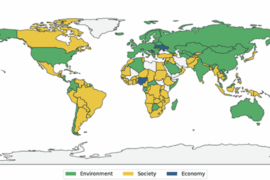Anomalous diffusion is ubiquitous in systems ranging from intracellular transport and porous-medium flow to animal foraging, and its quantification requires robust methods that cope with short and noisy trajectories. We present AnomalousNet, a unified three-stage pipeline for analyzing anomalous particle dynamics. First, up to 64 particles per 128×128 field of view are tracked using the Crocker–Grier algorithm via Trackpy. Next, an Attention U-Net trained on over 8.6 × 104 simulated experiments infers frame-wise anomalous exponents α, generalized diffusion coefficients K, and discrete motion states. Finally, regime changes are identified using an L2-regularized, windowed pruned exact linear time change-point detection algorithm. On the 2nd Anomalous Diffusion Challenge benchmark the method achieved MAE(α=0.32) and MSLE(K)=0.1, , state-classification F1=0.93, and change-point RMSE = 0.09, ranking second in the video single-trajectory task and ensemble task. These results demonstrate precise discrimination of subdiffusive, normal, and superdiffusive regimes, and frame-level identification of state transitions establishing AnomalousNet as a powerful tool for quantitative analysis of heterogeneous diffusion in video data.
Y. Ahsini, M. Escoto, and J.A. Conejero. AnomalousNet: a hybrid approach with attention U-Nets and change point detection for accurate characterization of anomalous diffusion in video data. \textit{J. Phys. Photonics} 7 (2025) 7 045015. https://doi.org/ 10.1088/2515-7647/ae0120





Comments are closed.